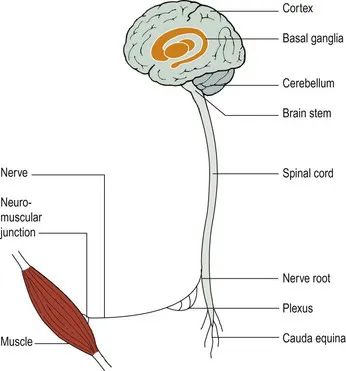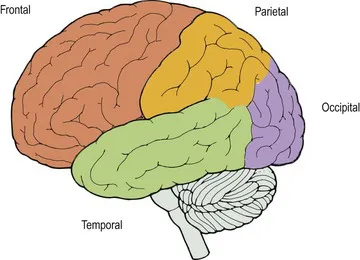
eBook - ePub
Neurology E-Book
An Illustrated Colour Text
Geraint Fuller, Mark R. Manford
This is a test
Share book
- 144 pages
- English
- ePUB (mobile friendly)
- Available on iOS & Android
eBook - ePub
Neurology E-Book
An Illustrated Colour Text
Geraint Fuller, Mark R. Manford
Book details
Book preview
Table of contents
Citations
About This Book
An introductory textbook of neurology in the Illustrated Colour Text series, making full use of all the usual features of the series - double page spreads, short paragraphs, summary boxes, attractive use of colour etc.
- Clear explanation of neurological examination - often found very taxing by students.
- Demonstrates how to approach common neurological presentations, such as blackouts and numbness, before moving on to a comprehensive coverage of syndromes and diseases.
- Concentrates on the core curriculum which the medical student really needs to know.
- Updated management in the light of new evidence and new drugs most notably in Parkinson's disease, epilepsy and multiple sclerosis.
- Images, particularly MRI scans, updated with more modern and higher resolution images.
- Includes a new double-page spread on Sleep.
- Extra material added on giddiness to include the head thrust test and Epley's manoeuvre.
Frequently asked questions
How do I cancel my subscription?
Can/how do I download books?
At the moment all of our mobile-responsive ePub books are available to download via the app. Most of our PDFs are also available to download and we're working on making the final remaining ones downloadable now. Learn more here.
What is the difference between the pricing plans?
Both plans give you full access to the library and all of Perlego’s features. The only differences are the price and subscription period: With the annual plan you’ll save around 30% compared to 12 months on the monthly plan.
What is Perlego?
We are an online textbook subscription service, where you can get access to an entire online library for less than the price of a single book per month. With over 1 million books across 1000+ topics, we’ve got you covered! Learn more here.
Do you support text-to-speech?
Look out for the read-aloud symbol on your next book to see if you can listen to it. The read-aloud tool reads text aloud for you, highlighting the text as it is being read. You can pause it, speed it up and slow it down. Learn more here.
Is Neurology E-Book an online PDF/ePUB?
Yes, you can access Neurology E-Book by Geraint Fuller, Mark R. Manford in PDF and/or ePUB format, as well as other popular books in Medicine & Internal Medicine & Diagnosis. We have over one million books available in our catalogue for you to explore.
Information
Organization of the nervous system
The practice of clinical neurology depends on an appreciation of the structure and function of the nervous system. However, a detailed knowledge of neuroanatomy is not essential. This section will outline some of the important neuroanatomy needed for clinical neurology. Some areas, for example the anatomy of the visual system, will be described in the relevant section.
The levels of the nervous system
The nervous system is very complicated, in terms of both its structure and its physiology. Fortunately, when things go wrong they can be categorized on the basis of a relatively simple scheme of neuroanatomy. The nervous system can be thought of as having different levels (Fig. 1). The distribution and type of the clinical problem will often point to the affected level. For example, a patient who is confused must have a disturbance affecting the cerebral hemispheres. There are some situations when the level cannot immediately be determined: for example, a patient with foot drop could have a problem in the peripheral nerve, nerve root, spinal cord or cerebral hemisphere. Terminology used to describe disturbances at different levels is given in Box 1.

Fig. 1 Levels of the nervous system.
Box 1 Terminology
Abnormalities in the different levels of the nervous system can be referred to according to different terms. One commonly used system is described here. The suffix -opathy can be replaced by -itis if there is thought to be an inflammatory basis to the disturbance.










These terms can be combined with one another or other qualifiers to produce descriptions such as focal encephalopathy, or meningoencephalomyelitis (inflammation of the meninges, brain and spinal cord).
The central nervous system
The cerebral hemispheres
The cerebral hemispheres contain the apparatus of higher function. The dominant hemisphere (left in right-handed people) controls speech and the non-dominant hemisphere provides more spatial awareness. Different lobes undertake different functions (Fig. 2):





Fig. 2 Lobes of the brain.
The basal ganglia
The basal ganglia are interconnected deep nuclei including the putamen, caudate, globus pallidum and substantia nigra with complicated interrelations. They are involved in the integration of motor and sensory ...